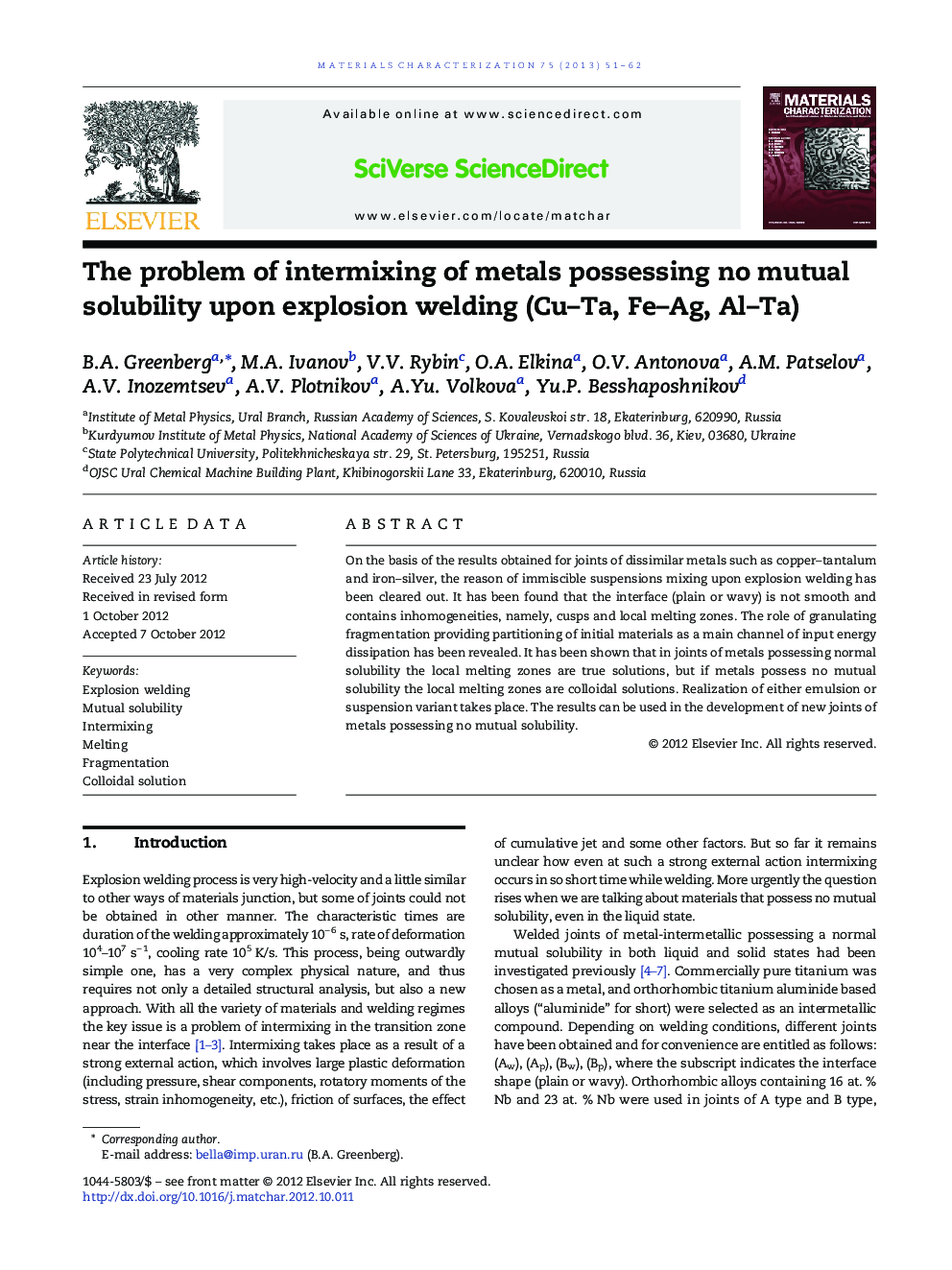| Article ID | Journal | Published Year | Pages | File Type |
|---|---|---|---|---|
| 1571288 | Materials Characterization | 2013 | 12 Pages |
On the basis of the results obtained for joints of dissimilar metals such as copper–tantalum and iron–silver, the reason of immiscible suspensions mixing upon explosion welding has been cleared out. It has been found that the interface (plain or wavy) is not smooth and contains inhomogeneities, namely, cusps and local melting zones. The role of granulating fragmentation providing partitioning of initial materials as a main channel of input energy dissipation has been revealed. It has been shown that in joints of metals possessing normal solubility the local melting zones are true solutions, but if metals possess no mutual solubility the local melting zones are colloidal solutions. Realization of either emulsion or suspension variant takes place. The results can be used in the development of new joints of metals possessing no mutual solubility.
► Immiscible pairs Ta/Cu and Fe/Ag are welded successfully by explosive welding. ► Fragmentation provides for partitioning as the main energy dissipation channel. ► Immiscible metals form colloidal solid solutions during solidification. ► Melting and boiling temperatures ratio determines the colloidal solution type. ► Local melting zones being in suspension form enhance welds hardening.
